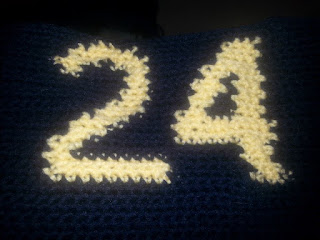What is a graphgan?
A graphgan is an Afghan that is made using a graphing pattern.
What is a graphing pattern?
A graphing pattern is a picture that has been made into a graph. A graph is a bunch of boxes over a picture in a grid-line form to symbolize stitches.
How do you read graphs?
Some graphs have written instructions. Some do not. When looking at the graph, each square represents one stitch.
What stitch should be done with graphgans?
Most graphgans use single crochets, half double crochets or tunisian crocheting.
How do you change colours?
There are a few ways to change colours on a project. These can be very complicated and stressful sometimes so here will be a post dedicated to how to change colours.
How do you start a graphgan?
Graphgans start the same way any other crocheting project starts, by chaining. (Most graphgans are 150 chains by 200 rows).
Do you have to follow the graph?
You don't have to however I suggest you do for the first few graphs you try until you become comfortable with the way they work.
How do you finish a graphgan?
You finish the graphgan the same way you finish any other project by pulling a long tail through the last stitch.
What is the most important thing to remember when making a graphgan?
The most important thing to remember is to count your stitches. This is especially important when you're just starting to learn how to make graphgrans. You stitch count should always equal the same number as your starting chain. (For example: If you start with a chain of 150 every row from start to finish should have 150 stitches.) If at some point you have more than what you started with you can always do a decrease by one, where needed. (It is rare you will lose a stitch, most often you gain one; this is usually because the colour change is done incorrectly.)
What can be made into a graphgan pattern?
Any picture can be make into a graph.
On the left is the original picture I used for my project. On the right is what the graph will look like that I need to follow to make the graphgan.







